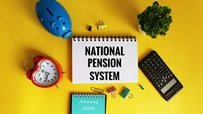Capital Adequacy Ratio (CAR): Meaning, Formula, and RBI Norms
Disclaimer: This blog is generic in nature. Ujjivan SFB does not offer any personal finance products or services.
September 04, 2025

Banks run on trust — but trust alone cannot guarantee stability. A sudden surge in bad loans or a market shock can quickly weaken even the largest institutions. To prevent such risks from turning into a crisis, regulators track one crucial measure: the Capital Adequacy Ratio (CAR).
CAR reflects whether a bank has enough capital to absorb losses and continue operations without endangering depositors’ money. It is the financial cushion that separates a safe, well-managed bank from one that might collapse under stress. In India, the Reserve Bank of India (RBI) treats CAR as a frontline defence, setting stricter standards than global norms to safeguard the system against shocks.
To see why this ratio matters so much, it’s important to begin with its definition — how CAR is calculated and what it actually measures in the health of a bank.
Definition of Capital Adequacy Ratio (CAR)
The Capital Adequacy Ratio (CAR), also known as the Capital-to-Risk Weighted Assets Ratio (CRAR), is a key indicator of a bank’s financial health. It measures the proportion of a bank’s capital to its risk-weighted assets (RWA), expressed as a percentage.
Capital Adequacy Ratio (CAR) calculation Formula:
CAR = (Tier 1 Capital + Tier 2 Capital) ÷ Risk-Weighted Assets × 100
Global standards under Basel III norms require banks to maintain a minimum CAR of 8%. In India, however, the RBI enforces a stricter benchmark of 9%, ensuring banks carry an extra cushion of capital given the sector’s exposure to stressed assets.
A bank with a CAR comfortably above this threshold signals strength and stability. One that falls close to it raises concerns about whether it has enough resilience to protect depositors in times of financial stress.
Components of Capital Adequacy Ratio (CAR)
The CAR framework is built on two categories of capital, each with a distinct role:
Risk-Weighted Assets (RWA) Explained
Not all loans and investments carry the same level of risk. To ensure fairness, regulators apply risk weights to a bank’s assets. For example:
This system ensures that a bank holding riskier assets must maintain higher capital. In effect, the RWA calculation prevents banks from appearing stronger than they really are by factoring in the quality of their assets, not just the quantity.
Regulatory Standards for Capital Adequacy Ratio (CAR)
The importance of CAR means regulators set clear minimum standards:
If a bank fails to meet these standards, it can face restrictions on lending, dividend payouts, and expansion until its CAR is restored.
Why CAR Matters
For most customers, CAR may seem like an abstract financial ratio, but its implications are very real. A strong CAR ensures that:
In short, CAR acts as a shield — protecting individuals, businesses, and the broader economy from the fallout of financial instability.
CAR and Its Impact on Customers
While CAR is mainly a regulatory measure, it indirectly affects everyday customers. A bank with a strong CAR has greater freedom to expand lending, which can mean easier access to credit and more competitive loan rates. On the other hand, if a bank’s CAR falls close to the minimum, it may tighten its lending standards, making it harder for individuals and businesses to borrow.
For depositors, CAR serves as an unseen assurance of safety. Even though most people do not track these ratios, a higher CAR signals that the bank is financially resilient. For investors, it is a key factor in assessing the long-term stability of a bank’s stock. In this way, CAR quietly shapes customer experience, from loan approvals to the overall sense of security in the financial system.
Final Thoughts
The Capital Adequacy Ratio (CAR) may look like just another financial statistic, but it plays a decisive role in shaping the stability of banks and, by extension, the entire economy. By ensuring banks hold enough capital against their riskier assets, CAR acts as a protective shield for depositors and a guiding framework for responsible banking.
In India, where regulators have chosen to set higher standards than the global norm, CAR is not just a compliance requirement but a cornerstone of financial security. For customers, it is a silent assurance that the institution they trust with their money is strong enough to withstand uncertainty.
Disclaimer:
The contents herein are only for informational purposes and generic in nature. The content does not amount to an offer, invitation or solicitation of any kind to buy or sell, and are not intended to create any legal rights or obligations. This information is subject to updation, completion, amendment and verification without notice. The contents herein are also subject to other product-specific terms and conditions, as well as any applicable third-party terms and conditions, for which Ujjivan Small Finance Bank assumes no responsibility or liability.
Nothing contained herein is intended to constitute financial, investment, legal, tax, or any other professional advice or opinion. Please obtain professional advice before making investment or any other decisions. Any investment decisions that may be made by the you shall be at your own sole discretion, independent analysis and evaluation of the risks involved. The use of any information set out in this document is entirely at the user’s own risk. Ujjivan Small Finance Bank Limited makes no representation or warranty, express or implied, as to the accuracy and completeness for any information herein. The Bank disclaims any and all liability for any loss or damage (direct, indirect, consequential, or otherwise) incurred by you due to use of or due to investment, product application decisions made by you on the basis of the contents herein. While the information is prepared in good faith from sources deemed reliable (including public sources), the Bank disclaims any liability with respect to accuracy of information or any error or omission or any loss or damage incurred by anyone in reliance on the contents herein, in any manner whatsoever.
To know more about Ujjivan Small Finance Bank Products Visit:"https://www.ujjivansfb.in"
All intellectual property rights, including copyrights, trademarks, and other proprietary rights, pertaining to the content and materials displayed herein, belong
to Ujjivan Small Finance Bank Limited or its licensors. Unauthorised use or misuse of any intellectual property, or other content displayed herein is strictly prohibited and the same is not intended for distribution to, or use by, any person in any jurisdiction where such distribution or use would (by reason of that person’s nationality, residence or otherwise) be contrary to law or registration or would subject Ujjivan Small Finance Bank Limited or its affiliates to any licensing or registration requirements.
FAQs
1. What is the minimum CAR required by RBI?
RBI requires banks to maintain a minimum CAR of 9%, higher than the global Basel III standard of 8%.
2. What is the difference between Tier 1 and Tier 2 capital?
Tier 1 capital is core capital, including equity and reserves, and is the strongest buffer against losses. Tier 2 capital includes instruments like subordinated debt and is supplementary in nature.
3. How is CAR calculated?
CAR is calculated as the ratio of a bank’s capital (Tier 1 + Tier 2) to its risk-weighted assets, expressed as a percentage.







